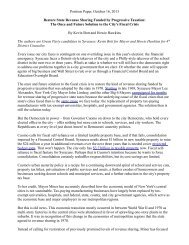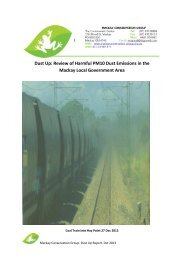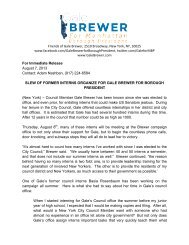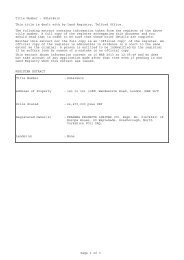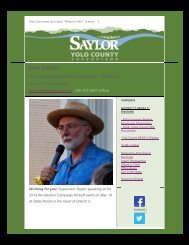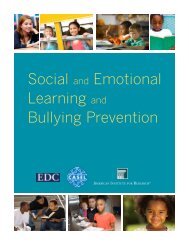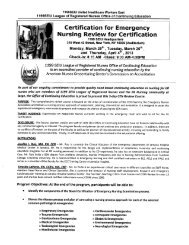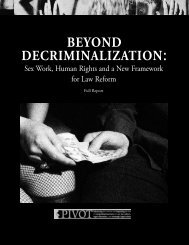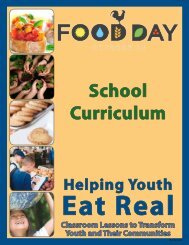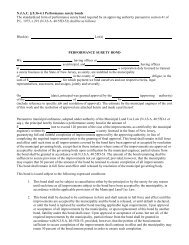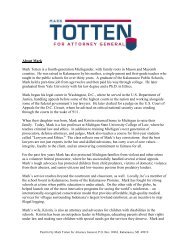You also want an ePaper? Increase the reach of your titles
YUMPU automatically turns print PDFs into web optimized ePapers that Google loves.
Lesson 3: Not Too Much<br />
— Core Activity —<br />
Procedure<br />
1. Review Eating Plant-based Meals<br />
Ask the students to share how it went when they showed their family their Choose MyPlate action<br />
plans. Encourage students to share positive feedback from their families as well as challenges their<br />
families face when trying to eat plant-based meals. Remind the students that the point of these <strong>Food</strong><br />
<strong>Day</strong> lessons is to bring what they learn to their families and communities.<br />
Aim<br />
To explore why it is important<br />
to not eat excessive fat, sugar,<br />
and salt and make an action<br />
plan to “small-size” overly<br />
processed foods.<br />
Materials<br />
• Fat and Sugar in <strong>Food</strong> and<br />
Drinks experiment sheet<br />
• Play Dough recipe<br />
• Sugar and Fat cards<br />
• Overly Processed <strong>Food</strong> card<br />
• sugar<br />
• play dough<br />
• teaspoon<br />
• 16 clear plastic cups<br />
• (optional) EMPTY<br />
12-ounce can and 20-ounce<br />
bottle<br />
• Small-Size-It Action Plan<br />
activity sheet<br />
Before You Begin<br />
• Make play dough.<br />
• Cut out the Sugar and Fat<br />
cards and print the Overly<br />
Processed <strong>Food</strong>s card.<br />
• Print and make copies of<br />
the Small-Size-It Action<br />
Plan activity sheet for each<br />
student.<br />
2. Discuss Why to Small-Size-It<br />
Discuss as a class that in the first few lessons, the main focus has been about WHAT TO EAT, that<br />
is to “Eat Real”: whole foods from plants and animals with a focus on having “Mostly Plants.” This<br />
lesson focuses on the foods we want to eat less of. That is, overly processed foods that have been<br />
significantly changed from how they exist in nature such as soda and other sweetened drinks, chips,<br />
candy, and highly processed packaged snacks. When these foods are changed from their whole state,<br />
the nutrients that came in them are often removed and sugar, fat, and salt are added. Although we all<br />
like the taste of these additives, when we have too much of them, our bodies cannot be their best and<br />
we are at risk of getting diseases as we get older. We can try to choose healthier options of processed<br />
foods that may have less fat, sugar, and salt in them, but the most sure way is to have these foods<br />
once-in-a-while and when we do, to remember the power of “small-sizing-it.”<br />
3. Explain Empty Calorie Recommendations<br />
Discuss with students that after you eat your meals according to MyPlate portions, there is a maximum<br />
number of empty calories* we can have within a day from beverages and snack foods. Empty<br />
calories are energy (calories) we get from fat and sugars that are added to processed foods. Empty<br />
calories give us excessive energy while providing very little or none of the nutrients we need. You<br />
might want to remind students of the activity in lesson 1 with the <strong>Food</strong> Change cards that showed<br />
the degree of nutritiousness and the degree of processing of various foods. Explain that reducing<br />
the number of empty calories will help them be their best today and stay healthy into the future.<br />
For children their age, the recommended maximum is 150 empty calories a day. Follow the Fat and<br />
Sugar in <strong>Food</strong> and Drinks experiment sheet. You will first show the students 150 calories of fat and<br />
sugar. Then you will measure the amount of fat and sugar in various foods. It becomes apparent that<br />
we use up all of our empty calories for the day with ONE small sweetened beverage, OR ONE bag<br />
of chips that is high in fat, OR ONE highly processed packaged snack high in sugar and fat. Clearly,<br />
our food environment is providing too many large portions of overly processed foods, consequently<br />
compromising our health.<br />
4. Write Personal Essays (optional, if time permits, or assign as homework)<br />
Have the students write an essay about why it is personally important to them to follow the <strong>Food</strong> <strong>Day</strong><br />
Eating Goals. They can think about what they want to be good at right now (such as school subjects,<br />
sports, dancing, music) and how following the <strong>Food</strong> <strong>Day</strong> Eating Goals will help them be successful.<br />
The more the students feel personally connected to and committed to the <strong>Food</strong> <strong>Day</strong> Eating Goals, the<br />
more they will be able to make changes and maintain them.<br />
5. Create a Small-Size-It Action Plan<br />
Hand out the Small-Size-It Action Plan activity sheet. Follow the directions on the sheet. The<br />
students are to make a plan that they will have a smaller portion of an overly processed food. Remind<br />
students they can also have a whole food instead of a highly processed food. Make sure to review the<br />
action plans to give students guidance on making their plan clear, specific, and measurable.<br />
* empty calorie recommendations: www.choosemyplate.gov/foodgroups/emptycalories_amount.html<br />
<strong>Food</strong> <strong>Day</strong> Lessons | 45



